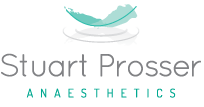
Caesarean section “Anaesthetic and Early Recovery”

Caesarean section “Anaesthetic and Early Recovery”
Overview
While a caesarean section is a significant operation, it is in the context of becoming a mother and starting your journey into motherhood. For some this is not a new experience, but in all cases, it is important that your time after birth is spent bonding with your baby, not recovering from surgery. As such, it is important that your recovery duration is as quick as possible so that you are capable to focus on the important tasks of motherhood; including feeding, bonding and most importantly being independent and not being troubled by discomfort. The quicker your capability to focus on motherhood the better; this improves your clinical outcomes and more importantly your experience will be significantly improved.
The ERAS Approach
The ERAS (Early Recovery After Surgery) approach has been shown to substantially improve patient experience after caesarean sections. Taking an ERAS approach to recovery after a caesarean section doesn’t just lead to better outcomes for the mother – it also leads to better outcomes for the baby – as both the mother (and the midwives supporting her) are able to dedicate more time toward mother-craft (lactation and maternal attachment) which is idyllic within the first three days.
So, what does an ERAS program after a caesarean section look like?
In the ideal world it would have five components:
- An education program: delivered by the multi-disciplinary team – based on explaining the components on the ERAS program. It should also focus on optimising the patient’s health prior to the caesarean section – including an exercise program during pregnancy and maintenance of weight.
- Adequate pain relief: The basis of pain relief during caesarean is a single shot spinal analgesia, with the use of either morphine or fentanyl. On returning to the ward, the patient should receive multi-modal analgesia – with the patient being able to give themselves the medication (self- medication program). The use of a self-medication program has been shown to lead to timely administration of analgesia (Delays in medication administration lead to inadequate analgesia, increased pain scores and increased use of opioid analgesia). The use of selfmedication programs has been shown to reduce pain scores, increase both patient (and midwife) satisfaction, and lead to decreased overall use of opioid analgesia.
- Early mobilisation: Early mobilisation is an important part of recovery, with patients being encouraged to mobilise once the local anaesthetic effects of the spinal have worn off; with mobilisation occurring between 6 and 12 hours post caesarean section.
- Early reintroduction of nutrition: This is important and leads to an earlier recovery.
- Early removal of catheter: With the aim of removing the catheter at 2 hours post-operation rather than the traditional 12-24 hours. The earlier removal of the urinary catheter has accompanied: reduced mobilisation time; reduced hospital-stay; and, decreased incidence of urinary frequency. With appropriate bladder management, there has been no significant increase in either bacteria or urinary retention.
As a General Practitioner anaesthetist and a General Practitioner obstetrician, I am a strong believer in the ERAS principles. My objective is to allow Mum’s to be Mum’s; not patients stuck in a bed recovering from surgery. My aim is that you will be up within 6-8 hours of the birth of your baby; showered and in your own clothes. I want your focus to be on developing a bond with your baby, not worrying about your recovery.

